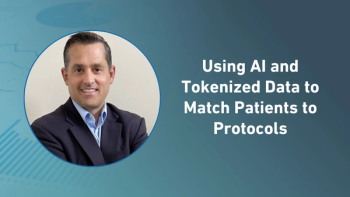
- Applied Clinical Trials-12-01-2019
- Volume 28
- Issue 12
Can Recruitment and Retention Get Any Worse?
Higher screen failure and patient dropout rates are raising the imperative to pilot and implement new study conduct models in trial recruitment and retention.
Ask any clinical operations or investigative site professional if patient recruitment is getting harder and you’ll receive a resounding “YES.” Despite isolated case examples of improvements in screen and randomization rates and impressive monthly enrollment numbers, the vast majority of clinical trials are seeing higher screen failure and dropout rates. Recent research conducted by the Tufts Center for the Study of Drug Development (Tufts CSDD) suggests that the growing focus on rare diseases and more targeted patient subpopulations is a contributing factor. Another key factor is associated with site selection and engagement practices. Combined, the current recruitment and retention environment raises the imperative and necessity to pilot and implement new study conduct models including hybrid and virtual clinical trials and those that more effectively leverage healthcare providers in clinical care settings.
In a recent Clinical Trial Insights column, I shared the results of a new Tufts CSDD study highlighting the unique challenges of clinical trials focusing on rare diseases that, taken together, add more than four years on average to development timelines-from IND filing to regulatory decision.
Sponsor companies have reported unprecedented difficulty finding clinical research professionals with expertise and experience in rare diseases. Many of these investigators are new to clinical research and lack even basic research infrastructure and operating controls. In later-stage Phase II and III clinical trials, sponsors and CROs engage half to 60% of the average total number of investigative sites for non-rare disease studies and enroll as few as 15% of the total average number of study volunteers per trial.
Though the average number of sites and patients are diminished, overall study conduct durations in rare disease clinical trials are substantially longer due largely to screening and randomization difficulties. Eight-out-of-10 (81%) patients screened for clinical trials for rare diseases are not eligible, and more than half (56%) of rare disease study volunteers fail to be randomized.
Evidence clearly shows that the burden placed on rare disease study volunteers is very high: protocol requirements are onerous and many patients and their families-particularly those in remote areas-must travel substantial distances to participate in, and must endure, lengthy and demanding visits.
A new Tufts CSDD study indicates that the patient recruitment and retention picture in non-rare diseases and conditions is also notable.
Challenge throughout the pipeline
Tufts CSDD conducted a study in September and October of this year looking at traditional, non-rare disease clinical trials. Twenty pharmaceutical companies provided data on 76 global Phase II and III clinical trials completed between 2016 and 2019 and involving 7,085 investigative sites. The overall average screen failure rate across all studies and therapeutic areas increased to 36.3%, up from 34.7% observed in 2012 (see Table 1). The overall average dropout rate across all studies and therapeutic areas increased 25%, from a rate of 15.3% up to 19.1% during the seven-year time period.
CNS and neuroscience clinical trials-one of the most active areas in the development pipeline-saw the most significant increases in screen failure and dropout rates. The average screen failure rate increased to 57%, up from an average rate of 29.5% observed in 2012. The average dropout rate increased 35%, from a rate of 19.2% up to 25.9%.
Clinical trials in oncology-the most active area-saw a worsening of average, per-study screen failure and dropout rates with the former increasing by 21.3% and the latter increasing by 6% compared to those rates observed in 2012.
Site management practices
Trends in site management practices suggest that sponsors are using a less experienced global community of investigative sites to each enroll an even smaller average number of study volunteers per clinical trial. Some of these sites are participating in rare disease studies, but the majority are in non-rare diseases. An analysis of global investigators filing form-1572 finds that in 2018 the highest observed percentage of investigators in the past two decades-41%-are first-time filers conducting an average of one active clinical trial. This is up from observed levels typically in the 35% to 37% range. This community of first-time filers has a very high relative turnover rate of 49%.
In a separate survey conducted by Tufts CSDD in 2018, 323 pharmaceutical companies reported that more than one-third of the global investigative sites that they engage are new relationships. This is up from 28% reported in a comparable survey conducted two years earlier.
In the September/October study mentioned earlier, Tufts CSDD observed a 30% increase in the average number of total study volunteers per site per clinical trial in North America since 2012. But in other regions around the world, the average number of study volunteers enrolled per investigative site per clinical trial has dropped significantly during that same period (see Table 2).
A study conduct revolution
Growing difficulty in finding patients who meet tightening eligibility criteria to participate in increasingly complex and demanding protocols is exacerbated by legacy study conduct processes and practices that hinder the ability to reach, attract and engage study volunteers. Many new and yet-to-be-widely-embraced technology solutions-including e-consent, wearable devices, and smart phone applications-are enticing clinical research sponsors to evaluate and pilot approaches. But many of these solutions are being deployed to complement legacy study conduct models.
Patients managing a wide variety of diseases and medical conditions want to participate in clinical trials that offer options for achieving higher levels of convenience, flexibility, and transparency while allowing them to build meaningful relationships with investigative site staff in a coordinated manner with their healthcare provider community.
Hybrid, decentralized, and virtual clinical trials offer varying degrees of reduced in-person visits at investigative site locations and increased opportunities to participate more easily and more conveniently at a remote location of their choosing. The use of networks of home nurses and roving, well-trained clinical research professionals to support remote clinical trial activity and, more recently, clinical trials embedded within the preferred, more accessible and trusted clinical care settings are part of this new transformation. Strong and rising interest in concierge services and patient navigators to provide assistance and logistics support are also part of the new study conduct landscape.
Flexible and more remote models are requiring a diverse mix of mobile, cloud-based data management solutions that can be customized to study volunteer preferences while being deployed and scaled quickly. Increasingly, the primary EDC will need to accommodate a higher volume of patient data from a wide variety of clinical and real-world data sources that can be aggregated and integrated efficiently.
The current operating environment signals the necessity for a faster and more earnest effort on the part of pharmaceutical and biotechnology companies to rethink and implement more transformative study conduct models to support their evolving portfolio requirements.
Flexibility, convenience, and transparency-oriented around the study volunteer and their clinical research and clinical care data-hold the keys to optimizing patient engagement and delivering better study conduct performance.
Ken Getz, MBA, is Deputy Director and Research Professor, Tufts CSDD and Chairman of CISCRP, both based in Boston, MA. email:
Articles in this issue
almost 6 years ago
How Do Regulatory Intelligence and Operations Envision Technology?almost 6 years ago
News Notesalmost 6 years ago
Next-Generation Focus in Immuno-Oncologyalmost 6 years ago
Labeling Challenges From EU Annex VIalmost 6 years ago
Unleashing New Insights from Toxicology Studiesalmost 6 years ago
Overcoming Transportation Barriers to Trial Participationalmost 6 years ago
Applied Clinical Trials, December 2019 Issue (PDF)almost 6 years ago
It Costs What to Do That?almost 6 years ago
Updates on Drug and Device Regulatory Reform in Chinaalmost 6 years ago
Beyond Hard Outcomes: The Next Era in Heart Failure R&DNewsletter
Stay current in clinical research with Applied Clinical Trials, providing expert insights, regulatory updates, and practical strategies for successful clinical trial design and execution.






.png)



.png)



.png)
.png)
